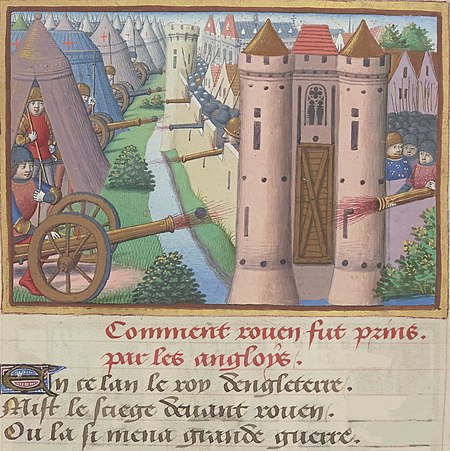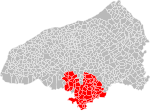Siege of Rouen (1418–1419)
1410s in France1418 in England1419 in EnglandConflicts in 1418Conflicts in 1419 ... and 7 more
Henry V of EnglandHistory of RouenHundred Years' War, 1415–1453Military history of NormandySieges involving EnglandSieges involving FranceSieges of the Hundred Years' War

The siege of Rouen (29 July 1418 – 19 January 1419) was a major event in the Hundred Years' War, in which English forces loyal to Henry V captured Rouen, the capital of Normandy, from the Norman French.
Excerpt from the Wikipedia article Siege of Rouen (1418–1419) (License: CC BY-SA 3.0, Authors, Images).Siege of Rouen (1418–1419)
Augustusplatz, Leipzig Leipzig-Zentrum (Mitte)
Geographical coordinates (GPS) Address Website Nearby Places Show on map
Geographical coordinates (GPS)
| Latitude | Longitude |
|---|---|
| N 49.44 ° | E 1.0938888888889 ° |
Address
Oper Leipzig
Augustusplatz 12
04109 Leipzig, Leipzig-Zentrum (Mitte)
Sachsen, Deutschland
Open on Google Maps









